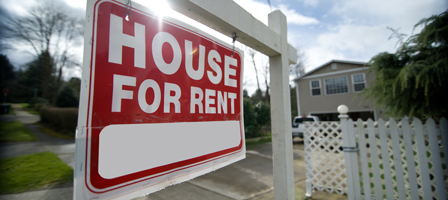CAN YOU TAKE A HOME OFFICE DEDUCTION?
Article Highlights:
- Home Office Deduction
- For Self-Employed Individuals
- Employee Home Office Issues
- Safe Harbor Home Office Deduction
If you run your small business out of your home, you may want to “write off” many of your household expenses. But how do you know what is deductible and what is not?
Generally, expenses related to the rent, purchase, maintenance and repair of a personal residence are not deductible. However, if you use part of your home for business purposes, you may be able to take a deduction for the business use of your home on your self-employed business schedule. This deduction is commonly referred to as the home-office deduction, but it need not necessarily be an “office” to qualify.
Expenses that can be deducted include the business portion of real estate taxes, mortgage interest (but not principal payments), rent, utilities, insurance, painting, repairs and depreciation. Expenses that are for both the business-use and non-business-use areas of the home (example: real estate tax) are prorated, generally in the ratio of the square footage of the office area to total square footage of the home, unless an expense is exclusive to the office (example: painting only the office area). As an alternative, the IRS provides a safe harbor deduction as explained below.
In order to claim a deduction for the business use of your home, you must use part of your home exclusively in your trade or business on a regular, continuing basis. You must be able to provide sufficient evidence to show the use is regular. Exclusive use means there can be no personal use (other than de minimis) at any time during the tax year. Use of only a portion of a room is acceptable as long as the taxpayer shows that section is totally for business. In addition, one of the following must apply:
- It is the principal place of business for a trade or business of the taxpayer;
- It is used for storing inventory for a wholesale or retail business for which the taxpayer’s home is the only fixed location of the business;
- It is a place where the taxpayer meets with customers, patients or clients (just telephone contact with clients isn’t enough to meet this test);
- It is used as a licensed day care center; or
- It is in a separate structure not attached to the taxpayer’s home.
If you work as an employee you can claim this deduction only if the regular and exclusive business use of the home is required by and for the convenience of your employer and the employer does not rent that portion of the home. If the home-office deduction is challenged by the IRS, an employee will have to provide documentation from the employer that the employer requires the employee to have a home office as a condition of employment.
“Exclusive use” means a specific area of the home is used only for trade or business. “Regular use” means the area is used regularly for trade or business. Incidental or occasional business use is not regular use. In addition, employees must deduct the office as a miscellaneous itemized deduction, which has three additional limitations: the employee must itemize deductions (can’t take the standard deduction), this type of miscellaneous deduction is reduced by 2% of AGI (income), and it is not deductible at all to the extent the taxpayer is subject to the alternative minimum tax (AMT). Non-business profit-seeking endeavors, such as investment activities, do not qualify for a home office deduction, nor do not-for-profit activities, such as hobbies.
Example: An attorney uses the den in his home to write legal briefs or prepare clients’ tax returns. The family also uses the den for recreation. The den is not used exclusively in the attorney’s profession, so a business deduction cannot be claimed for its use.
As an alternative, where taxpayers (either self-employeds or employees) meet the qualifications for deducting business use of the home, they can elect a simplified deduction rather than itemizing expenses. This simplified method is referred to as the “safe-harbor” method and allows a deduction of $5 per square foot with a maximum square footage of 300. Thus, the maximum deduction is $1,500 per year. This method can be used in any year in lieu of the regular method.
If you have questions regarding how the home office deduction might apply to your unique situation, please give this office a call.







Leave a Reply
Want to join the discussion?Feel free to contribute!